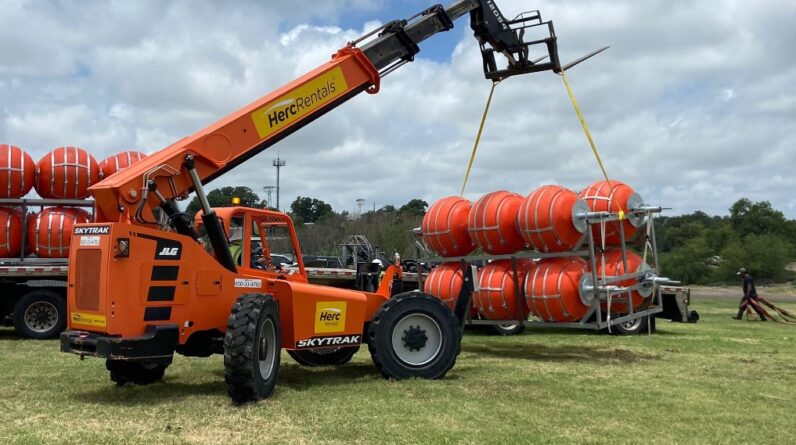
[ad_1]
Installation of the marine barrier on the Rio Grande began July 7, 2023.
Source – Texas Department of Public Service.
Mexico has sent a letter of complaint to the U.S. government saying that Texas’ use of floating barriers on the Rio Grande violates international law.
Alicia Bárcena, Mexico’s Foreign Relations secretary, filed a letter of complaint with the U.S. government on Friday, saying the floating barriers in the Rio Grande River on the U.S.-Mexico border in Texas may violate international treaties.
According to the Associated Press, Bárcena said Mexico will send an inspection team to the Rio Grande to see whether any of the barriers extends into Mexico’s side of the border river.
She also complained about U.S. efforts to put up barbed wire on a low-lying island in the river near Eagle Pass, Texas.
The state of Texas may be in violation of a 1944 treaty with the United States and the Treaty to Resolve Pending Boundary Differences and Maintain the Rio Grande and Colorado River, signed in 1970.
This treaty aimed to prevent any one country from unilaterally taking measures that would displace the boundary or impair its integrity. According to Digital Journal, any such measures, including the construction of levees or other barriers along the river in its reach from El Paso to Brownsville, require the approval of both the U.S. and Mexican governments.
Texas began rolling out what is set to become a new floating barrier on the Rio Grande on July 7, a part of Republican Governor Greg Abbott’s multibillion-dollar effort to secure the U.S. border with Mexico, reports Spectrum News.
Once installed, the above-river parts of the system and the webbing they’re connected with will cover 1,000 feet (305 meters) of the middle of the Rio Grande, with anchors in the riverbed.
During a bill signing in Austin, Texas on June 8, Abbott announced the plan, saying: “This is a new water-based barrier … we can put mile after mile after mile of these buoys,” while showing a picture of the buoy barrier.
“What we are doing right now, we are securing the border at the border – what these buoys will allow us to do is to prevent people from even getting to the border,” he added, reports CNN News.
[ad_2]
Source link






